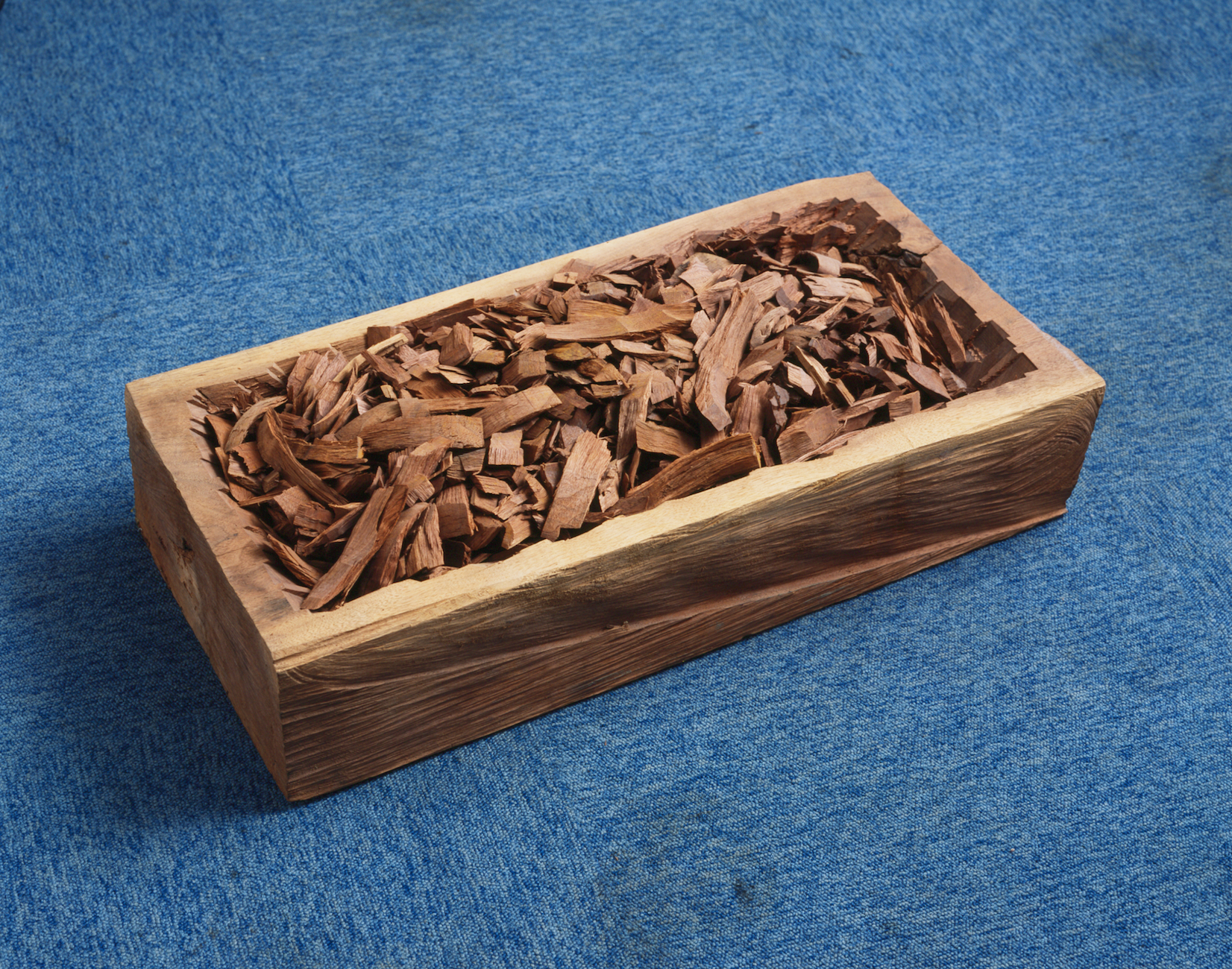Oneness of Wood
Jirō Takamatsu made his Oneness series between 1969 and 1972. As you can tell by the titles of the works in front of you, he always highlighted the material he used, which explains why he called the works Oneness of Concrete and Oneness of Wood. To make these works, he hollowed out cubes of material like concrete, wood or marble, then smashed the gouged-out material into smithereens, before returning these fragments to the original hollowed space in the cube. The uneven texture of this rubble contrasts with the smooth exterior surfaces of the cube, and questions the usual immaculate appearance of Minimal forms. In fact, the artist intended to subvert the seamless geometries of Minimalism with these works.
This complex series of works also questions language. For example, we could describe Oneness of Wood as a cube of wood. Yet, the words “cube of wood” clearly don’t convey how the object changed after Takamatsu laid his hands on it. What can words really signify?
Takamatsu is one of the most influential Japanese artists of the past 60 years. His work in the 1960s and ’70s was affiliated with the Mono-ha artists, a group of artists in Japan who arranged raw materials like stones and glass with minimal intervention. Takamatsu taught at Tama Art University in Tokyo, and many of the Mono-ha artists attended his classes. Some of his students include Nobuo Sekine and Kishio Suga, whose works are also in this exhibition.
Artwork details
- Artwork Title
- Oneness of Wood
- Artist
- Jirō Takamatsu










